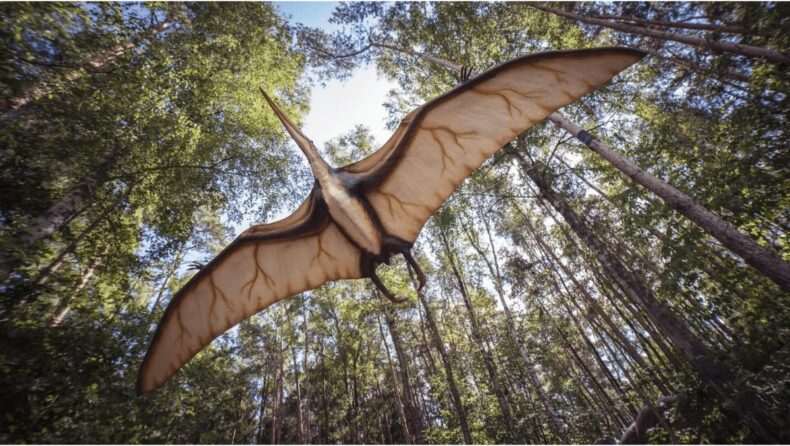A new examination of the remains of a small reptile found in Scotland around 230 million years ago during the Triassic period is helping to shed light on the humble origins of pterosaurs.
Primarily discovered over a century ago in the northeast of Scotland, the Triassic fossil reptile is identified as a close relative of the pterosaurs, the quintessential flying reptiles of the age of dinosaurs.
Pterosaurs that can grow to a tremendous size with wingspans similar to that of a fighter jet had magnificent anatomy. They ruled the skies with their exotic head crests and colossal fingers, supporting their majestic wings.
The ancestry and evolution of these avian creatures have remained a long mystery to scientists. With the help of the recent discovery of a new fossil from Scotland, researchers can now analyze more on their origins more.
The reptile, named Scleromochlus Taylor, belongs to a group of species called lagerpetids that are treated as the closest relatives of pterosaurs. Scleromochlus mirrors the very image of reptiles from which the pterosaurs evolved, even though they are not a direct ancestor.
As a result of its being poorly conserved in a sandstone block, it was difficult for the scientists to study its anatomical characteristics accurately.
Before the Scleromochlus, two other species of fossils were also discovered in the same area, which belongs to the Morayshire region located around the town of Elgin.
Thus, the new group now belongs to the category of Elgin reptiles, conveniently named after the town itself.
All the specimens discovered are mostly held by National Museums Scotland, Elgin Museum, and The National History Museum. Scleromochlus fossils are being held in the National History Museum.
Dr. Foffa said: “It’s exciting to be able to resolve a debate that’s been going on for over a century, but it is far more amazing to be able to see and understand an animal that lived 230 million years ago and its relationship with the first animals ever to have flown.”
Features and Characteristics of the Pterosaurs
The diet of Scleromochlus is believed to consist of insects and other tiny invertebrates. They are measured to be 20 cm long (8 inches), with a gigantic head, long and skinny limbs, a short build, and a long tail.
Unlike the former hypothesis that they have a sprawling disposition like that of a lizard or frog, it is now assumed that they might have walked on two legs while standing on their toes.
To study the fossil trapped in the sandstone, complex and advanced scanning technology was used to search deep inside the sandstone to get a clear view of its anatomy for the first time.
Since its first discovery in 1907, there have been a total of seven Scleromochlus unearthed near the town of Elvin. Due to the availability of only primitive technologies, further studies of the fossils were impossible to continue, thus adding to the mystery surrounding the beast.
“They are peculiar animals, with such a bizarre type of body that it’s hard to figure out what their closest relatives and ancestors are,” said University of Edinburgh paleontologist Steve Brusatte.
With birds and bats appearing about 150 and 50 million years ago, pterosaurs have the privilege of being called the Earth’s first flying vertebrates. One of the first pterosaurs was small, roughly the size of a crow, and later grew to have a wing span of 10.7 meters (35 feet).
“Scleromochlus still looks quite different from pterosaurs. It’s kind of like a monkey compared to a human,” Brusatte said. “It’s a primitive cousin, as it shares features of its delicate bones, especially its small pelvis and the in-turned thigh bone that connects to it. But Scleromochlus did not yet have a wing. It was not yet a flier. Evolution still had a lot of work to do.”













